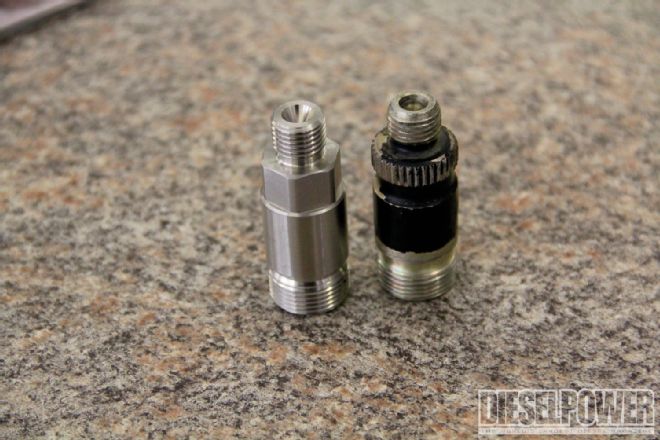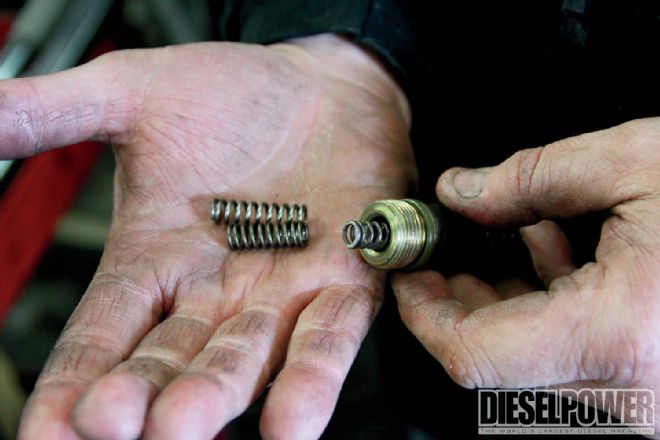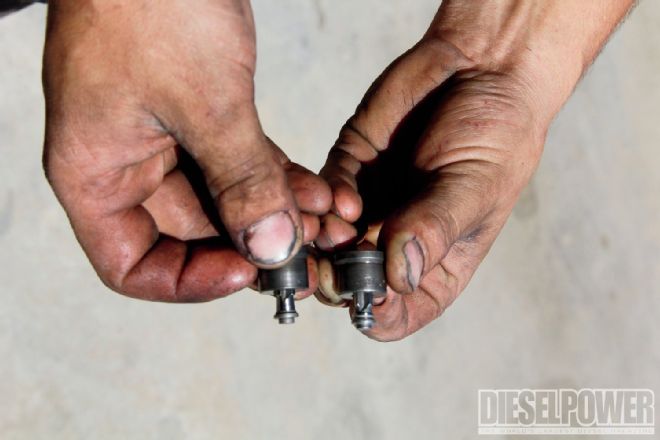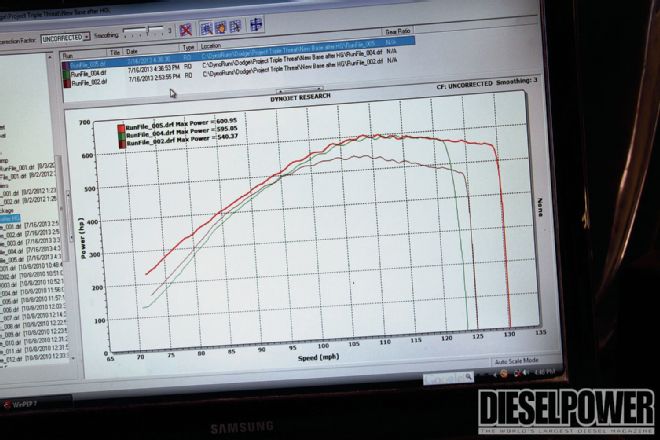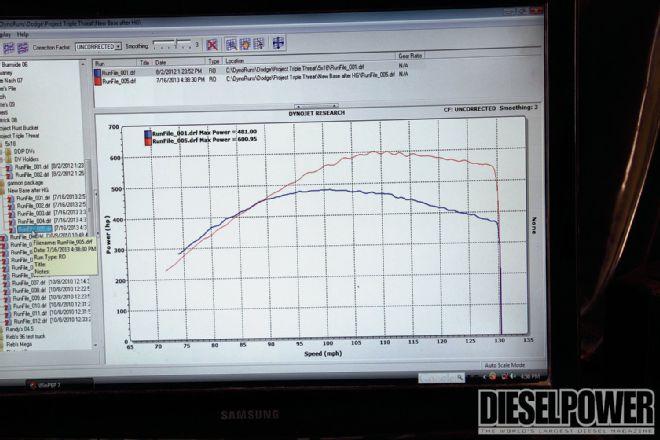Nearly three years ago, we set off to build a ’95 Dodge that could do it all: sled pull, drag race, daily drive, and tow. While we were derailed in our performance quest slightly by a badly blown head gasket, we upgraded our head studs and installed fire-rings and were back in business.

| A chassis dyno is key in being able to measure small changes in P-pump tuning. The folks at Brown’s Diesel in Riverdale, California, were nice enough to let us use their Dynojet 248C while we fiddled with the injection pump.
Since we had some scoring on the cylinder walls of the 300,000-mile Cummins after the head gasket blew, our first step was to establish a baseline to see if we’d lost any power. On a cold morning, where the density altitude was below sea level, the truck had made 564 rwhp, but most other times (hot days) it dyno’d a consistent 540 rwhp. Since it was 90 degrees out, we based our new baseline on that number, and guess what—it clicked off 536 rwhp on the very first dyno pull. We guess the engine wasn’t that hurt.
"We broke 600 rwhp by the slimmest of margins with a 600.95hp dyno pull."
Still, we knew there had to be more left in it, because there were a few fueling tricks we hadn’t tried yet. Also, our ARP 625 head studs would allow us to go big on timing, which we assumed would bump us up quite a bit. As it turned out, our assumptions were correct.
Delivery Valve Holders
Our first step was to replace the factory delivery valve holders with aftermarket versions that had an orifice that looked about 100 times bigger. We were excited about this swap because visually the difference was so great, but when they were installed and the truck was strapped to the dyno, it only picked up 4 hp, to 540 rwhp. Hmm, back to the drawing board.

| Our first move was to install delivery valve holders from Industrial Injection. The stock versions had to be removed, which required a special socket.
From 21 Degrees to 28 Degrees Timing
Most Cummins enthusiasts run somewhere between 15 to 20 degrees of timing on their mild street trucks, but since we had good studs and a Haisley Machine head gasket, we decided to be daring. After all, we heard timing makes big power on 160hp pumps—and better we break our stuff than you. With our truck sounding like a bunch of marbles in a cement mixer at idle, we pulled onto the dyno. Under power, the truck sounded mean, and we were definitely pleased by the numbers: a 45hp boost at peak power up to 595 rwhp—and more power throughout the entire curve.

| After the delivery valve holders, we changed pump timing. While it was impossible to know exactly where our timing was because we had raised the pop pressure on the injectors, we figured we were somewhere in the neighborhood of 28 degrees.
Breaking 600 hp? Maybe?
We still had one trick up our sleeve, which was switching from our clean-burning 024 delivery valves to a set of full cuts, which wouldn’t limit fuel at all at the delivery valve. When the Dodge was floored, everyone scattered, as the previously hazy truck was now emitting a volcanic amount of black smoke during the dyno pull. Once the smoke cleared, we saw 600.95 rwhp on the screen, which was the best we could muster, despite a few more dyno pulls.
What’s Next?
It’s unbelievable the difference that adding another 60 rwhp has made in the truck. It’s run 7.76 at 89 mph (roughly 12.2 in the quarter-mile), and it’s getting to the point where it can beat almost anything on the road.
As much as we love horsepower, it’s actually tempting to stop here, as the next round of modifications involves bigger turbos, a larger injection pump, and a host of other goodies that could make it less driveable. We also know this combination would make a solid 800 rwhp with nitrous, but nitrous has its drawbacks.
With the realization that many people will be happy with a 600-rwhp truck, we’re setting up a stock vs. not shootout. In this competition, we’ll put Triple Threat through its paces against a bone-stock, 160hp ’95 Dodge to prove how far it has come in categories such as horsepower, torque, dragstrip times, towing ability, and fuel mileage. Stay tuned.
